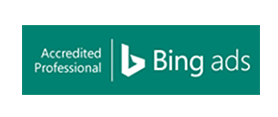In today’s social climate, aesthetic is becoming an increasingly crucial way to portray your brand’s identity and help you stand out from your competitors. With the majority of the world’s population now online, your business’s website is the new storefront and web designers the new visual merchandisers.
With a background in illustration, I completely understand the desire to create an incredibly flashy website that’s hugely creative. However, after spending time working as a UX and web designer for a marketing company, the importance of functionality at the design stage has made itself clear.
A site’s design can be key in helping or hindering a business’s efforts to achieve their marketing goals and can help a business excel online… so long as it’s thought about at the start of the project.
Below are a few things that you should consider when designing a marketing-focused website that achieves your business’s goals.
Target Audience
Designing for your target audience is a no-brainer. Your target audience isn’t typically involved in the design process (if you are a small business who doesn’t have the resources to conduct customer research before embarking on your website build), and so their needs often get overlooked for the tastes of the designer or what the client thinks will work best for themselves.
It’s great if the site’s design looks amazing to the designer or the client, however, neither of them will be the ones using the final product. Your website needs to appeal to those who are going to be using it, sharing it with their friends, and bringing you in business.
Calls to Action
Misuse of calls to action takes me back to my first point. The site should be designed for your user and not yourself. It’s tempting to overdo it with CTAs. If there are more buttons to click or a massive notice on the screen which blocks the rest of the site they are more likely to click it right? Not necessarily.
Think about how often you yourself actually click through on pop ups or banner ads. Plastering valueless calls to action all over your website is like when you get those really annoying pop ups which just keep popping back up once they are closed. It’s going to annoy your user and make it less likely they are going to want to give you their custom. Instead, use CTAs to offer something of value to your user. Be sure to talk to them directly and don’t be pushy.
Calls to action are also great for informing the user of what action it is you want them to take on your site. CTAs are extremely effective if done properly. Think about how attractive your offer is to your user, and consider placement carefully.
If there are a few different CTAs on your page, consider what the main action you want the user to take on the page is. If you want them to get in touch, are they making it all the way down to your contact form, or is there another element on the page that is directing them to another part of the website before they reach it? Consider the hierarchy of the conversions you are wanting to capture.
Usability
It seems to have become a trend recently to produce heavily animated websites with minimal information and quirky navigation or scroll functions. Although this may look great and modern, if the user doesn’t know how to navigate through your website, they aren’t likely to stick around to find out how to do so. Navigation is the backbone of your site and humans tend to be creatures of habit, so keep the navigation where they expect to find it; at the top or the left-hand side of a page.
In regards to using motion on a website, you have to consider your site’s load time. The more complex your site is, the longer the load time. The majority of users will leave a site if it doesn’t load in under 3 seconds (according to websitemagazine) so if you fill your website full of flashy motions which result in your site taking ages to load, your site won’t even be seen and the motion will be pointless. Motion should only be used if it fits a purpose or solves a problem.
Marketing
Life after the website is built often isn’t thought about by many web designers or clients until after the launch. Considering future marketing efforts and incorporating it into the design stage will save you a lot of time and money in the long run. Are you going to incorporate a MailChimp signup form to capture people’s email addresses? Are you going to go down the display ad route?
We often get clients who come to us because they want to improve their conversion rates using pay per click campaigns. Nine times out of ten, the page which they are paying to direct people to doesn’t have enough information on it to be authoritative enough to encourage conversions (sometimes they don’t even have a call to action or contact information).
By considering your marketing strategy before the build of the website you can ensure your pages are authoritative enough and contain enough information to direct people to encourage conversions. As a result, you don’t have to fork out more money to a design company to get your site restructured and built.
SEO, page names, and URLs should all be considered before the design stage even begins. Page names have a big impact on your site’s navigational structure and how pages are categorised. Google is a digital god and getting to the top of Google is getting even more competitive. If SEO isn’t considered before you launch your site and redirects have not been carried out properly from your old site you risk your site dropping in Google, and what good is having a website if nobody can see it?
Conclusion
Overall, great design fits a purpose, and in the corporate world that tends to be helping companies achieve their business goals. A site can look amazing, but if it’s super hard to use, people won’t have the perseverance to carry their interaction or transaction through to the end, rendering the design more of a hindrance than a help.
Your website needs to align with your business’s overarching strategy in order to help you accomplish your marketing goals. What you want from people visiting your site should be considered right in the initial stages.
I hope this helps you in your journey to getting yourself online! Read our web design guide for help with planning your website or get in touch today to find out how we can help you design a website that achieves your business goals.









2 Responses
Such a great article! It is strange to me how many people fail to look ahead or consider the users of a website.
How to design a website for achieving our business goals is the most important online factor. Because you will get more business through online presence. You have shared really useful details for that. Such a nice Article.